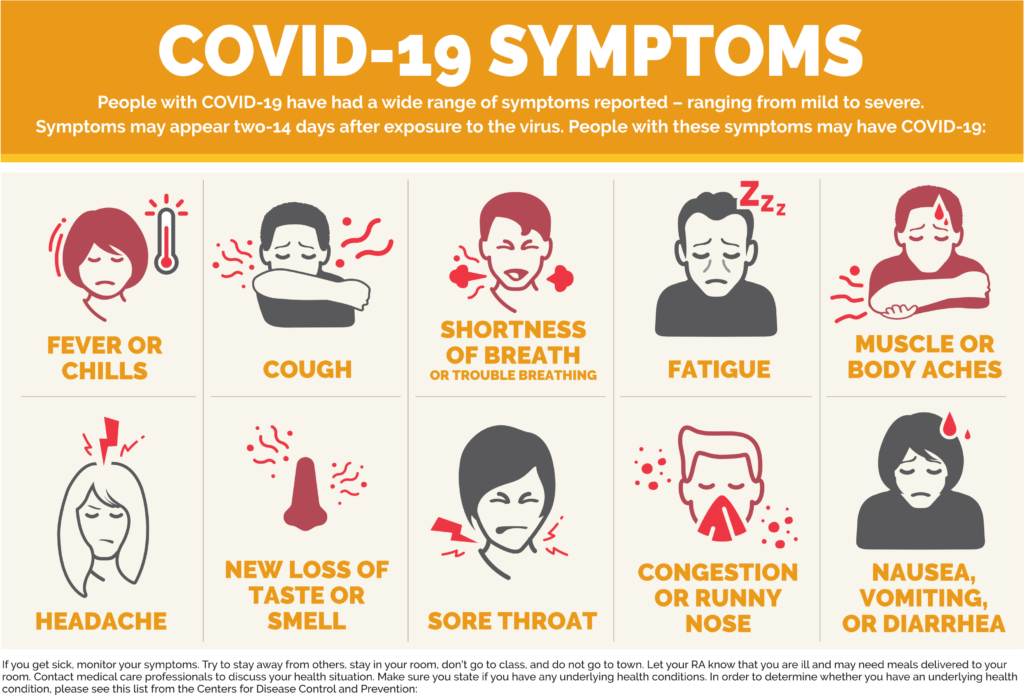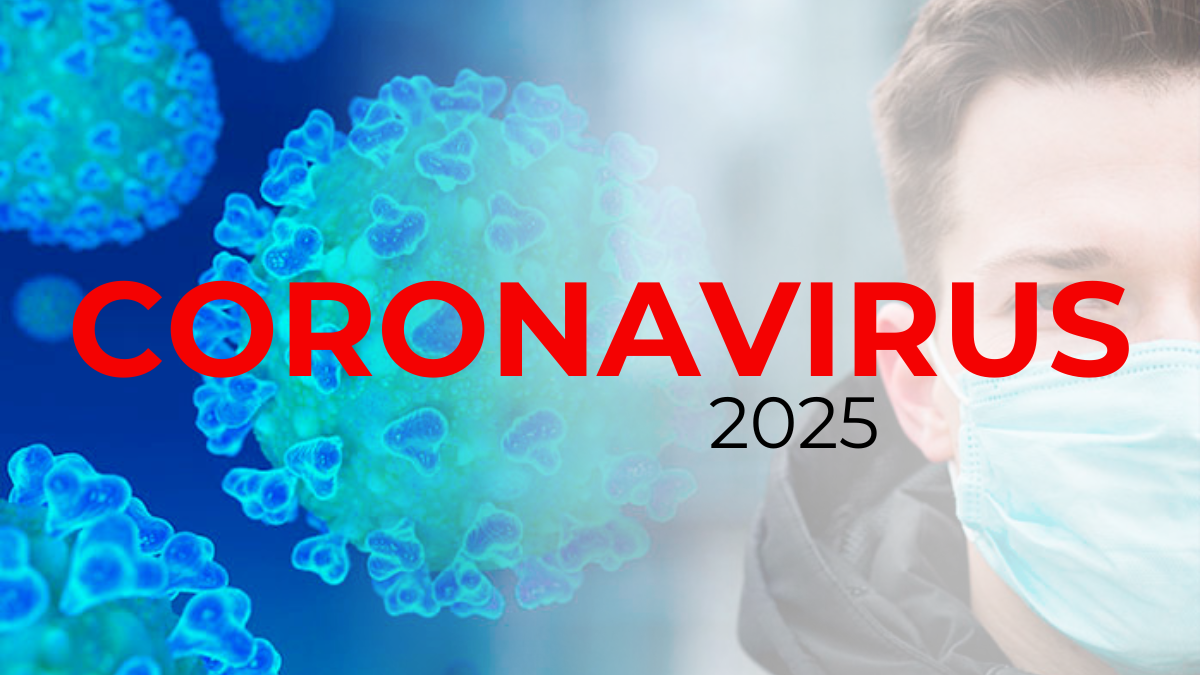What Are the COVID Symptoms in 2025? A Doctor’s Essential Guide

People can develop Covid symptoms anywhere from 2 to 14 days after virus exposure. Early detection is a vital part of proper care that prevents the virus from spreading. Some people might feel mild discomfort, while others could face severe complications needing immediate medical care.
The most common signs show up as fever, cough, and shortness of breath. The virus affects everyone differently, but people over 60 and those with health conditions like high blood pressure or diabetes face a substantially higher risk of severe symptoms.
The complete range of covid symptoms will evolve through 2025. This piece breaks down warning signs by age group and helps you decide the right time to get medical help. You’ll learn what symptoms to watch for and how long they typically last. The information lets you make better choices about your health.
Early Warning Signs of Covid in 2025
The XEC variant has become the dominant COVID strain in early 2025, making it important to spot early symptoms. Knowing these warning signs is vital to get timely care and stop the spread.
First 48 hours of symptoms
COVID-19 symptoms usually start mild in the first 48 hours before they might get worse. People notice they feel tired and can’t exercise as much as usual. Four out of five adults have at least one symptom that lasts a month or longer.
The most common early warning signs include:
- Nasal congestion or runny nose
- Sore throat
- Dry cough
- Fever or chills
- Extreme tiredness
- Body aches and headaches
How symptoms differ from cold and flu
COVID-19 makes people feel more tired and achy than a common cold. The virus also takes longer to show symptoms compared to flu, which typically appears 1-4 days after exposure.
Here’s what makes COVID-19 different:
- Timing: COVID symptoms show up 2-14 days after exposure, while flu takes 1-4 days
- Unique Signs: People often lose taste or smell early with COVID-19, even without congestion – something rare with colds or flu
- Progression: Symptoms might start mild but can get worse over time
Latest XEC variant symptoms
The XEC variant, now dominant in 2025, looks much like previous strains but spreads more easily. Studies show that XEC has spread faster than other variants across several European regions.
XEC’s main symptoms include:
- Congestion and runny nose
- Persistent cough
- Stomach problems (diarrhea, nausea)
- Fever and chills
- Fatigue
- Headaches
- Loss of taste or smell
Research shows COVID-19 in 2025 tends to be milder, but people over 75 or those with weak immune systems still face higher risks of serious illness. The risk of long COVID remains, with some people getting extreme fatigue, breathing problems, or muscle weakness that last more than three months after infection.
If you have symptoms, stay home until 48 hours after you feel much better. Get medical help right away if you have emergency signs like severe breathing problems, chest pain that won’t go away, or sudden confusion.
READ MORE ABOUT Coronavirus Risk
Common Covid Symptoms by Age Group

Age is a vital factor in how COVID-19 affects different groups. Research shows distinct symptom patterns in people of all ages, which requires specific approaches to identify and treat the disease.
Children under 12
Young children typically show milder COVID-19 symptoms, but parents need to stay alert. Studies show that fever affects 46-64% of children, and cough appears in 32-56% of cases. The most worrying aspect is that some children show no symptoms, with asymptomatic cases reaching up to 45% during hospital surveillance testing.
This age group’s common symptoms include:
- Upper respiratory issues (runny nose, sneezing)
- Barking cough linked to croup
- Gastrointestinal problems
- Fatigue and body aches
Teenagers and young adults
Teenagers and young adults show a distinct set of symptoms. Research shows that 52% of people aged 16-30 experience symptoms that last up to six months. The most common symptoms in adolescents include:
- Daytime tiredness or low energy (80%)
- Body and muscle pain (60%)
- Persistent headaches (55%)
- Memory and concentration difficulties (47%)
Adults over 60
Older adults often show unusual COVID-19 symptoms that doctors might miss. These seniors may look “off” or behave differently instead of showing typical signs.
Senior adults often display:
- Decreased energy levels
- Confusion or disorientation
- Changes in mobility
- Unexplained dizziness
- Loss of appetite
The situation becomes more complex because older adults might not develop typical fever patterns due to their aging immune system. They might show:
- Sudden behavioral changes
- Increased sleep patterns
- Unexplained falls
- Difficulty maintaining daily routines
Doctors stress that chronic conditions can hide infection signs in older adults. Any unexpected change in an elderly person’s behavior or routine needs immediate medical attention. This is especially important since 76% of COVID-19 deaths in the U.S. occur in people 65 and older.
When to Get Medical Help
Knowing how to identify COVID-19 symptoms that require medical attention can significantly impact treatment outcomes. Medical understanding of the virus evolves continuously, and certain warning signs need immediate action.
Emergency warning signs
Some symptoms require urgent medical care. Call 911 right away if you experience:
- Severe breathing difficulties: Watch for trouble breathing or shortness of breath that prevents speaking in short sentences
- Mental state changes: Sudden confusion, inability to wake up, or difficulty staying awake
- Skin color changes: Depending on skin tone, watch for pale, gray, or blue-colored lips, nail beds, or skin
Children show these specific emergency signs:
- Fast breathing or ribs pulling in with each breath
- Severe muscle pain
- Dehydration (no urine for 8 hours, dry mouth)
- Fever above 104°F uncontrolled by medication
Chest pain symptoms to watch for
Chest pain remains a common COVID-19 symptom that requires careful monitoring. Studies show that 22% of long-COVID patients experience cardiovascular complications, and chest pain emerges as the most prevalent symptom.
These chest pain characteristics need monitoring:
- Location and type: 43% report retrosternal pain, and 61% describe it as compressing or pressure-like
- Timing: 88% of patients experience chest pain from illness onset
- Associated symptoms: Pain often connects to heavy coughing (39% of cases)
Medical attention becomes necessary immediately if you have:
- Sudden or severe chest pain that persists
- Chest pain with vomiting, nausea, or sweating
- Pain occurring with loss of consciousness
Contact your healthcare provider to evaluate urgent care if:
- Symptoms worsen or fail to improve
- You have other concerning signs like persistent weakness
- High temperature lasts five days or more
- You belong to a high-risk group (pregnant, over 60, or immunocompromised)
Note that early intervention typically results in better outcomes. Healthcare professionals can properly assess your condition and recommend appropriate care if you feel unsure about your symptom severity.
How Long Does Covid Last Now
COVID-19’s duration has become more relevant as new variants keep emerging. The latest medical data shows clear patterns in how long it takes to recover and what it all means for the long term.
Typical recovery timeline
People with mild COVID-19 usually have symptoms for about 10 days. Most patients start getting better within two weeks after catching the virus, and many show the most important improvements by day 14.
Your recovery time depends on several factors:
- Mild cases: Symptoms go away in 10-14 days
- Moderate cases: Full recovery takes 2-4 weeks
- Severe cases: You might take 6 weeks or longer to fully recover
The vaccine makes a big difference – vaccinated people tend to get better faster and have milder symptoms. But even mild cases just need careful attention since 10-30% of patients with mild infections end up with lasting symptoms.
Long Covid signs
Long COVID shows up when symptoms last more than three months after the original infection. This ongoing condition affects millions of people worldwide, creating unique challenges for both doctors and patients.
You might have long COVID if you experience:
- Persistent fatigue: Extreme tiredness, especially after any physical activity
- Cognitive issues: “Brain fog” makes it hard to remember things and concentrate
- Respiratory challenges: You still feel short of breath or have trouble breathing
- Cardiovascular symptoms: Your heart races or your chest feels uncomfortable
Research shows about 6 in 100 people get long COVID. Most patients see big improvements within 3-6 months, but some might face these challenges for longer.
Doctors have noticed that symptoms can:
- Pop up suddenly or build slowly
- Get better and worse over time
- Hit multiple parts of your body at once
- Make it hard to work or do daily tasks
Right now, doctors know about 200 different symptoms linked to long COVID. Each case looks different, so healthcare teams focus on treating specific symptoms to help patients feel better. Regular checkups and proper medical care play a crucial role throughout recovery.
READ MORE ABOUT Coronavirus Risk
Conclusion
Covid-19 symptom awareness plays a vital role in health management through 2025. The XEC variant typically causes mild illness, but people over 75 or those with compromised immune systems still face the most important risks.
Research shows most people recover within two weeks. The risk of long Covid still exists and affects about 6 in 100 people. They experience ongoing fatigue, breathing difficulties, and cognitive challenges that can last several months.
Early symptom detection greatly improves treatment outcomes. Fever and cough are common indicators, but age-specific symptoms need special attention. These range from subtle behavioral changes in seniors to persistent fatigue in young adults.
You must stay vigilant and act quickly on warning signs. Seek immediate medical care if you experience severe breathing difficulties, chest pain, or sudden confusion. People with mild symptoms should isolate until 48 hours after their condition improves significantly.
Covid-19 affects everyone differently. Your knowledge of current symptoms, age-specific warning signs, and when to get medical help strengthens your ability to make better health decisions for yourself and your community.
FAQ
How long is a person contagious with COVID-19 in 2025?
On average, a person is contagious with COVID-19 for about eight days, though this can vary depending on the severity of the illness. It’s important to take precautions to prevent transmission during this period.
What are the primary symptoms of the latest COVID-19 variant?
The latest variant commonly causes congestion, cough, fatigue, fever, headaches, and loss of taste or smell. Some people may also experience gastrointestinal symptoms like diarrhea and nausea.
When should I seek medical attention for COVID-19 symptoms?
eek immediate medical care if you experience severe breathing difficulties, persistent chest pain or pressure, sudden confusion, or inability to wake up or stay awake. These are considered emergency warning signs.
How long does it typically take to recover from COVID-19?
Most people with mild cases recover within 10-14 days. Moderate cases may take 2-4 weeks, while severe cases can require 6 weeks or longer for full recovery. However, some individuals may experience long COVID symptoms lasting beyond three months.
What are the signs of long COVID?
Long COVID signs include persistent fatigue, cognitive issues (often called “brain fog”), ongoing breathing difficulties, and cardiovascular symptoms like heart palpitations. These symptoms can last for several months and may fluctuate in intensity over time.

Writer and web developer with a background in Biomedicine and a postgraduate degree in Immunohematology.

